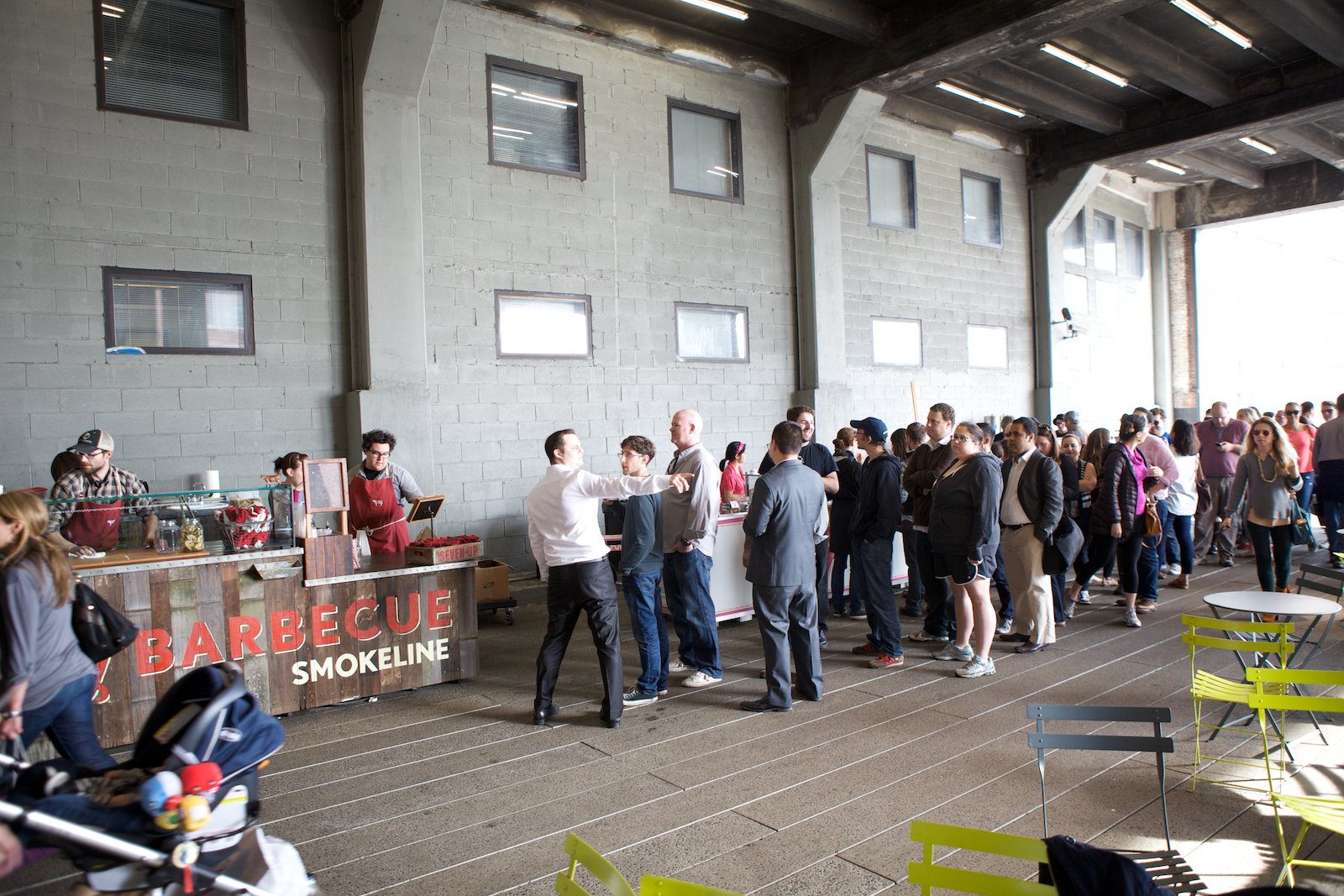
Restaurant Venture:
SmokeLine
What: Outdoor barbecue kiosk on The High Line
Where: New York City
When: 2013 – 2014 (two seasons)
Overview
SmokeLine was a mobile barbecue concept launched at New York City’s High Line park, at a time when Delaney Barbecue’s Williamsburg flagship was gaining significant critical acclaim. The idea was to bring brisket to the masses—specifically, to thousands of daily visitors strolling along one of the city's most iconic urban parks. With excess production capacity at our commissary and enthusiasm from the High Line’s operators, we saw this as an exciting opportunity to extend the brand, reach new audiences, and experiment with mobile service.
Strategy
Our core strategy was to leverage existing kitchen capacity and growing brand momentum to explore a new retail channel. We had physical bandwidth, and SmokeLine felt like a natural way to activate it. Additionally, being on the High Line felt prestigious—a stamp of legitimacy in a high-foot-traffic, highly visible setting.
But in hindsight, the strategy was missing a key consideration: product-context fit. The families and tourists roaming the High Line weren’t necessarily looking for hot, messy brisket sandwiches served from a cart. What we offered, while excellent, didn’t align with the behaviors or needs of our environment.
Operations
SmokeLine operated from a custom-built stainless steel food cart, clad in reclaimed wood from Brooklyn water tanks, hand-painted by a sign artist. It was a beautiful, high-touch structure—designed and fabricated by Precision Innovations with detailed millwork by Brian Welch.
We served primarily sandwiches built around freshly smoked brisket, delivered daily from our commissary. Some featured melted cheese, pickled onions, and other signature flourishes. The cart had a dedicated manager and a small team of staff. Operationally, it was lean and disciplined.
But the offering had friction. Cold, windy days made hot barbecue less appealing, and the physical format—standing and eating over a paper-lined tray—proved awkward in a park setting. Though we executed well, the mismatch between concept and context showed up in the guest experience.
Operational Snapshot
Operated for two seasons (2013–2014) on the High Line in New York City
Single mobile unit, custom-built stainless cart clad in reclaimed Brooklyn water-tank wood
Menu: Brisket-based sandwiches, daily deliveries from central commissary
Daily throughput: ~150–200 transactions at peak weekends
Average check: ~$14–$16
Estimated annualized sales: ≈ $250–300K per season
Labor cost: ≈ 32–34% (two-person on-site team plus commissary support)
Food cost: ≈ 28–30%
Gross margin: ≈ 40%
Rent / fees to Friends of the High Line: ≈ 15–18% of sales
Capex: ~$40K (cart fabrication, permits, utilities)
Breakeven window: Not achieved—concept/environment mismatch limited scalability
Reflections
SmokeLine offered some of the most enduring lessons of my career:
Prestige ≠ Fit: Being in a high-profile location doesn’t guarantee relevance or traction. I chose the opportunity based on excitement and optics, not necessarily business fundamentals.
Audience Matters: A concept beloved by locals in Williamsburg doesn’t always translate to tourists visiting Manhattan. The buyer personas were completely different—and I hadn’t accounted for that.
Bait the Hook to Suit the Fish: I wasn’t designing the product for the context. I was selling food that I wanted people to want, rather than giving people what they’d come to that park looking for. This misalignment created operational drag instead of brand lift.
Don’t Scale Before You Stabilize: We expanded because we had capacity. But what we really needed was to densify sales at our core restaurant. Expanding before that foundation was firm only added complexity and diluted our focus.
In the end, SmokeLine wasn’t a failure in execution—it was a mismatch in concept. And it reshaped how I think about guest behavior, environmental context, and the dangers of expansion without precision.
Marketing Event:
Squarespace @ SXSW
What: I developed and executed the promotional efforts for Squarespace at the South by Southwest Festival.
Where: Austin, TX
When: 2011 & 2012
Rolling Up
In 2011 everyone was going crazy over food trucks. I was no exception. I was in the middle of producing my first web show, VendrTV, which was about the best street food in the nation. Because of this, Squarespace approached me and asked if I’d be interested in curating the menu for their promotional activation at the 2011 South by Southwest Music and Technology festival in Austin, TX. They were about to launch the new version of their website platfom (which I’m still using on this site!) and wanted to make a big splash. They thought a food truck filled with the best food in Austin, TX would be an amazing way to generate buzz.
I was excited about the opportunity, and within no time, the planning of a menu evolved into handling nearly every element of the festival

